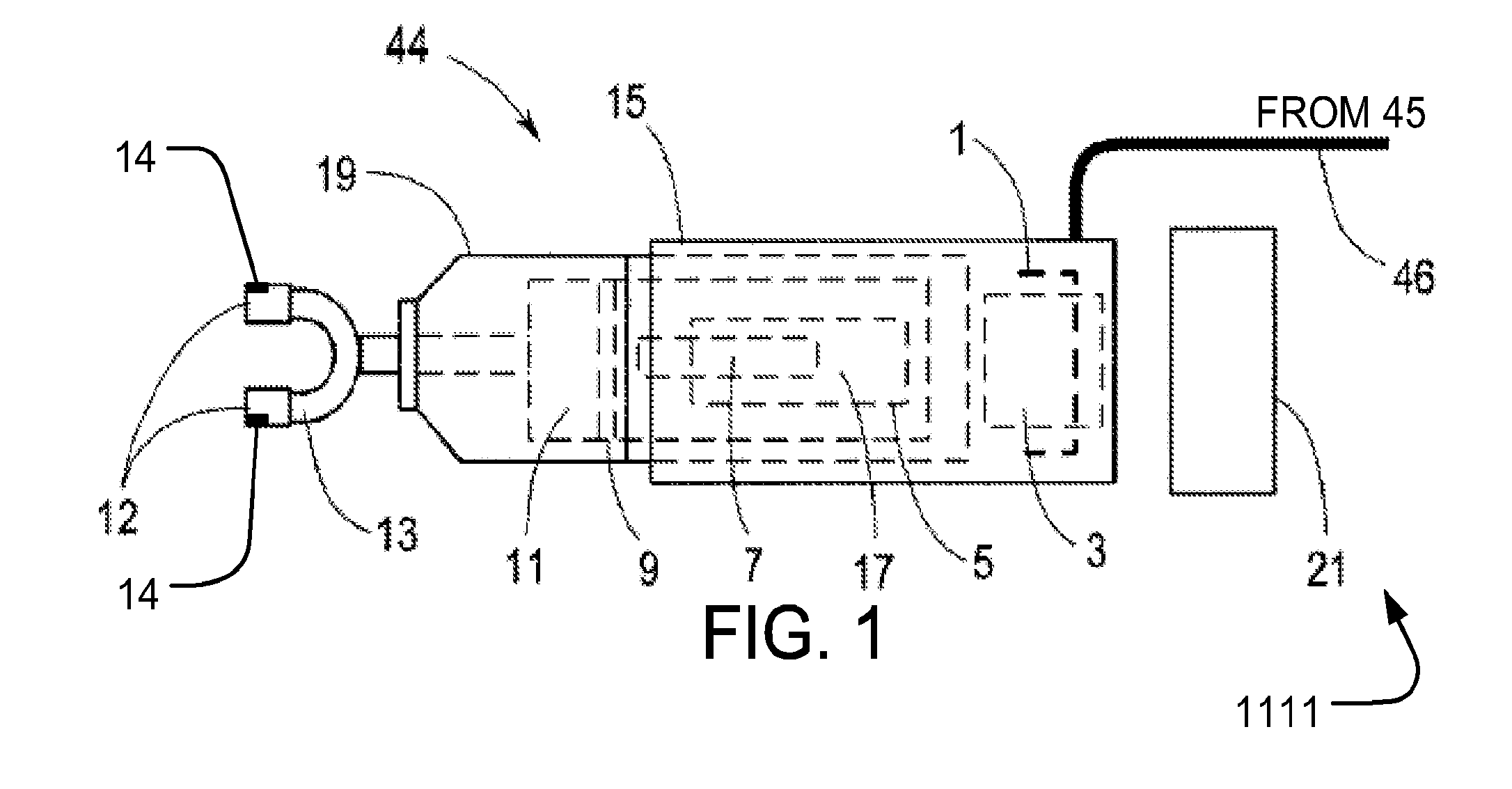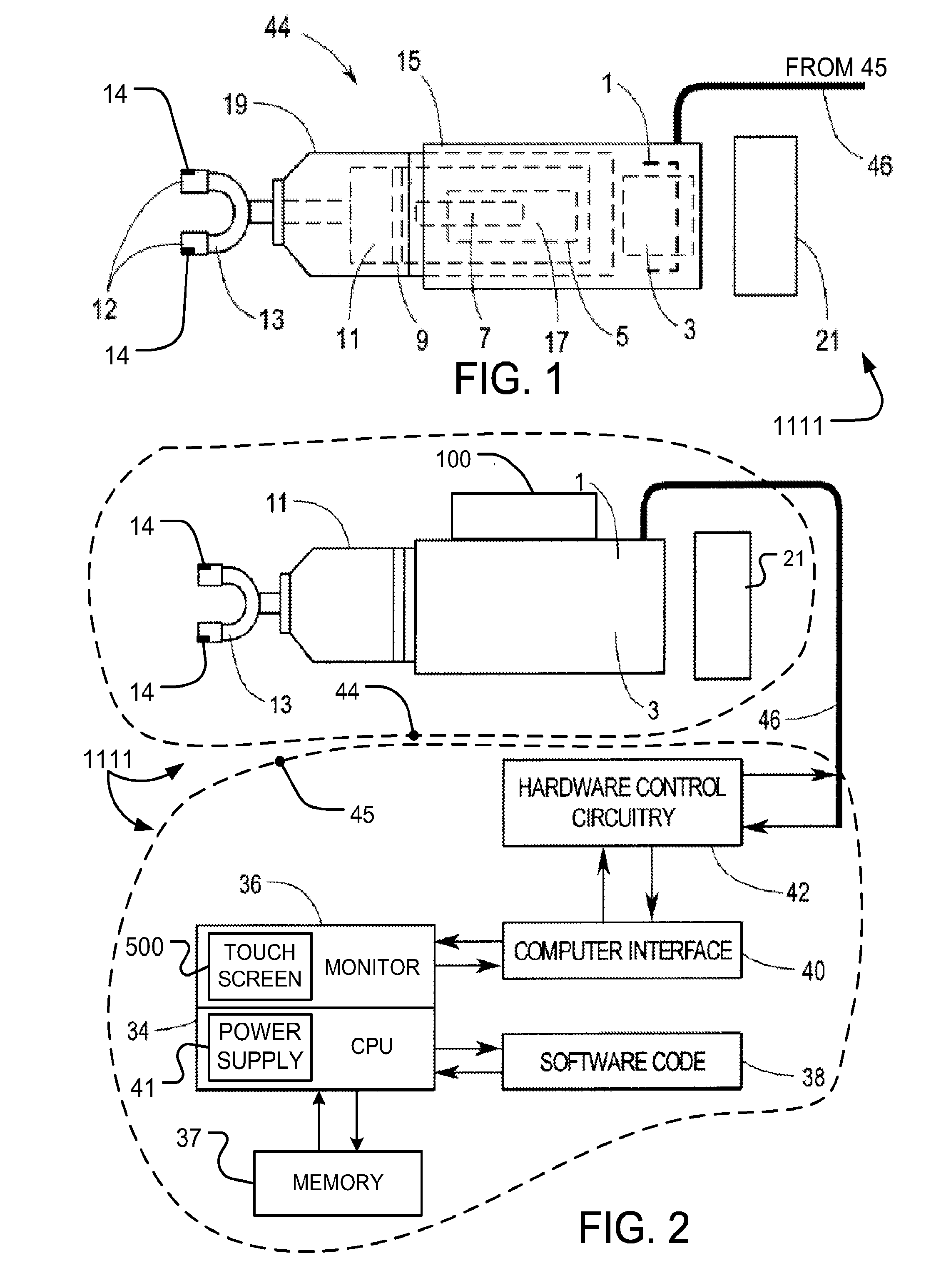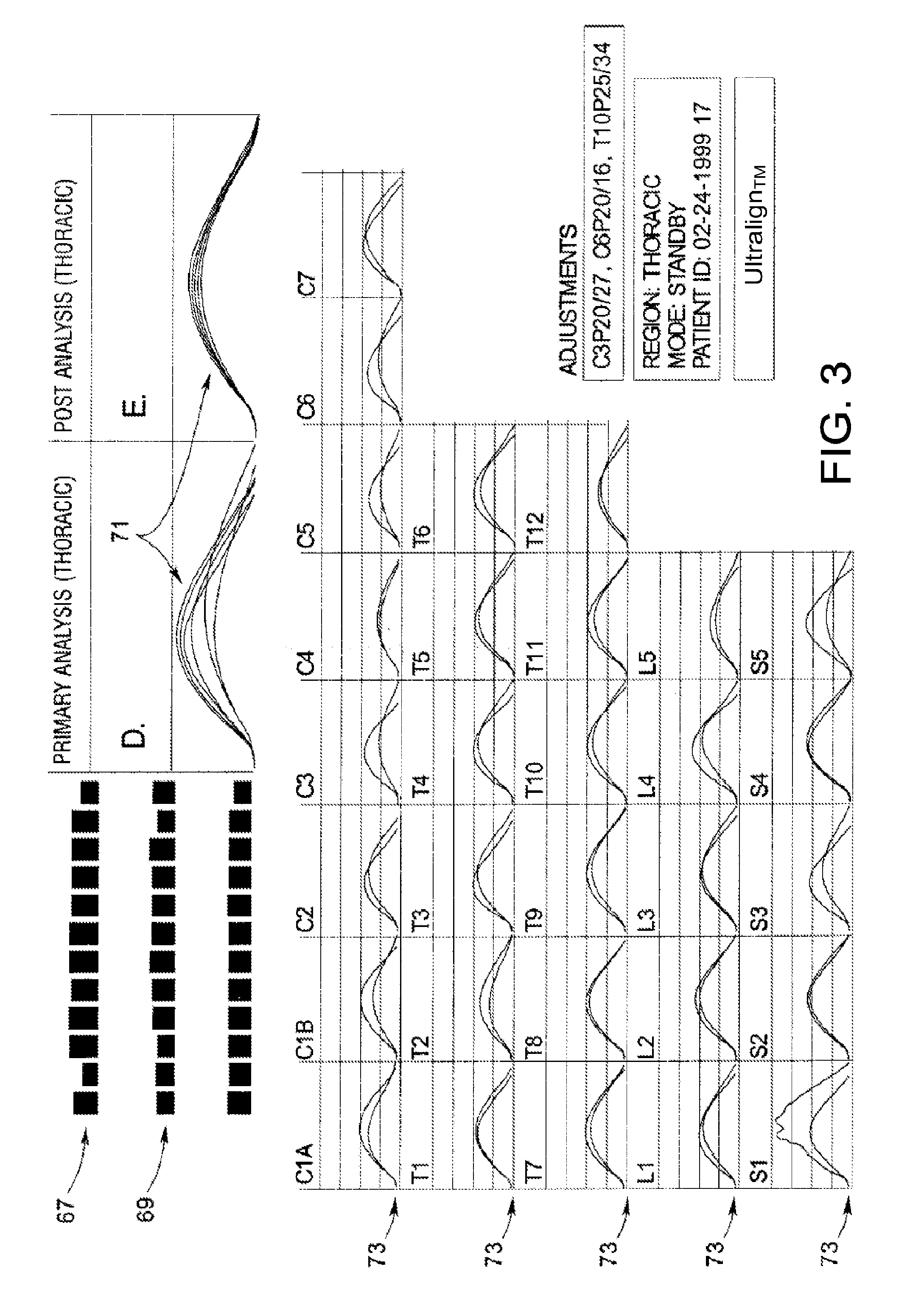System and method for treating soft tissue with force impulse and electrical stimulation
- Summary
- Abstract
- Description
- Claims
- Application Information
AI Technical Summary
Benefits of technology
Problems solved by technology
Method used
Image
Examples
first embodiment
[0219]As can be understood from the preceding discussion, in the system, the system 1111 is a system for treating tissue associated with a desired outcome of a surgical procedure on a patient. The system 1111 includes a display screen 36, a computer processor 34, an input device 500, a memory 37, and a treatment head 44. The display screen is configured to display information associated with the treatment of the tissue. The computer processor is configured to provide for the selection of a type of surgery and a surgical location on the patient. The surgical location is shown on the display screen as a part of an image 1702 of a patient region associated with the surgical location. A treatment point 1704A-D, which is associated with the treatment of the tissue, is identified on the image. The input device is in electrical communication with the display screen and configured to receive information associated with the treatment of the tissue to be delivered at the treatment point. The ...
second embodiment
[0220]Also, as can be understood from the preceding discussion, in the system, the system 1111 is a system for treating tissue associated with a desired outcome of a surgical procedure on a patient. The system includes a database N122 contained in a memory 37. The database contains data categorized by surgical locations. The data includes a plurality of anatomical images 1702, a plurality of treatment points 1704A-D identified on the plurality of anatomical images, and a plurality of treatment protocols N210 associated with plurality of treatment points. The system is configured such that a selection of a specific surgical location and a specific surgical procedure to occur at the specific surgical location causes an image 1702 of a specific region of the patient to be displayed on a display of the system, the image of the specific region including the specific surgical location. At least one treatment point 1704A-D is caused to be displayed on the image of the specific region. The ...
third embodiment
[0226]As can be understood from the preceding discussion, in the system 1111, the system is for delivering at least one of preoperative or postoperative therapy to tissue associated with a surgical outcome. The system 1111 includes a database N122, an input device 500, a display device 36, a treatment head 44, and a CPU 34. The database includes a plurality of anatomical images 1702 respectively correlated to a plurality of surgical target sites. The input device is configured to allow a selection of a specific surgical target site from the plurality of surgical target sites. The CPU is in communication with the database, input device, display device and treatment head. When the specific surgical target site is selected from the plurality of surgical target sites, the CPU causes a respective specific anatomical image to be displayed on the display and treatment points 1704A-D to be indicated on the displayed specific anatomical image. The CPU causes the treatment head 44 to function...
PUM
 Login to View More
Login to View More Abstract
Description
Claims
Application Information
 Login to View More
Login to View More - R&D
- Intellectual Property
- Life Sciences
- Materials
- Tech Scout
- Unparalleled Data Quality
- Higher Quality Content
- 60% Fewer Hallucinations
Browse by: Latest US Patents, China's latest patents, Technical Efficacy Thesaurus, Application Domain, Technology Topic, Popular Technical Reports.
© 2025 PatSnap. All rights reserved.Legal|Privacy policy|Modern Slavery Act Transparency Statement|Sitemap|About US| Contact US: help@patsnap.com



